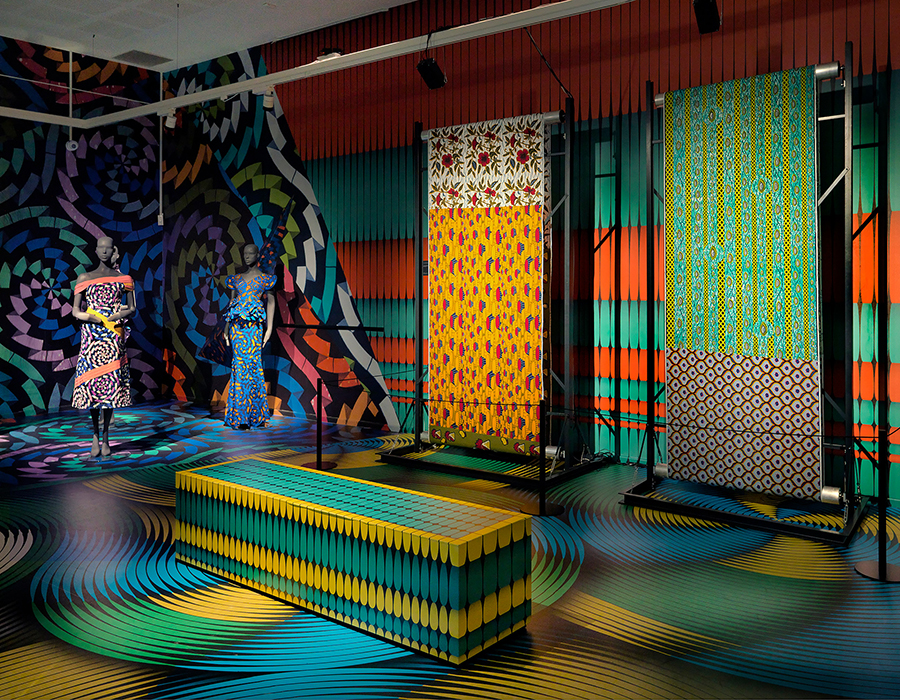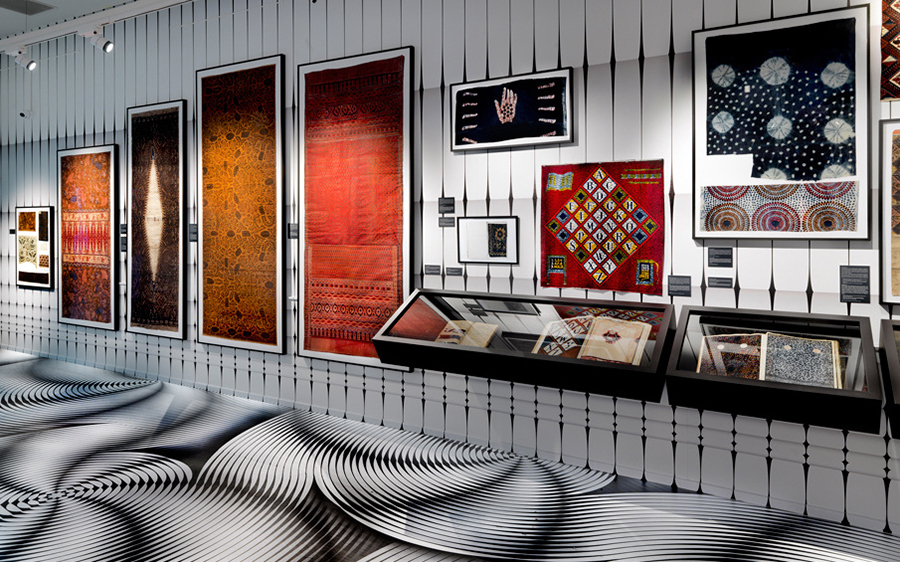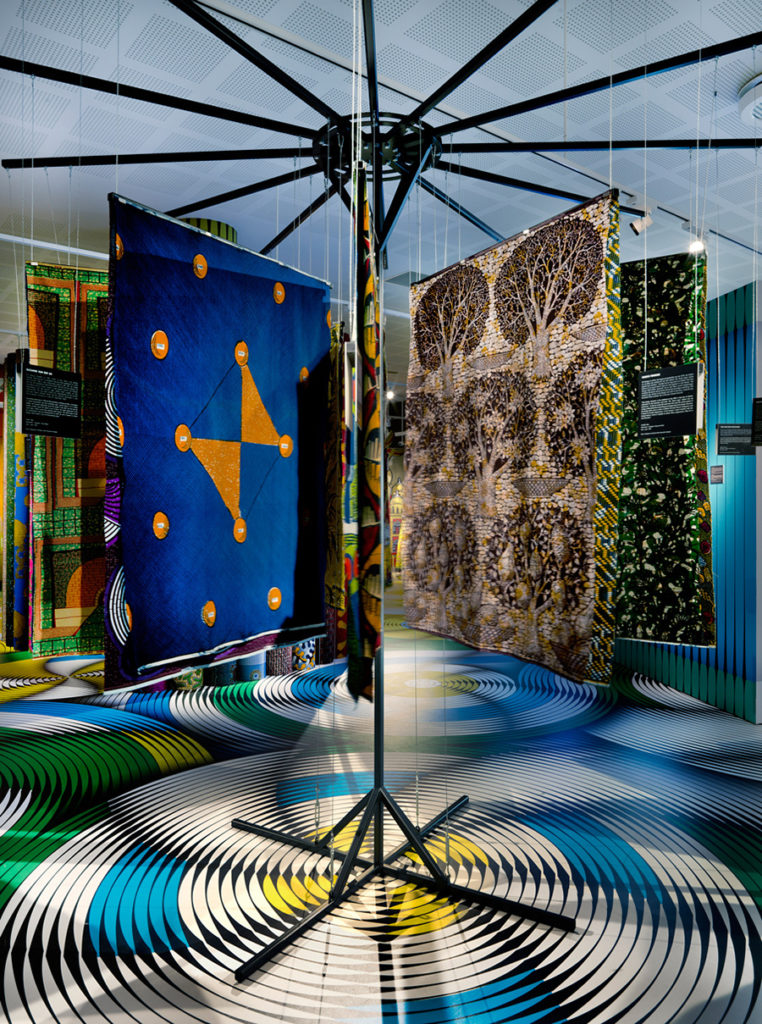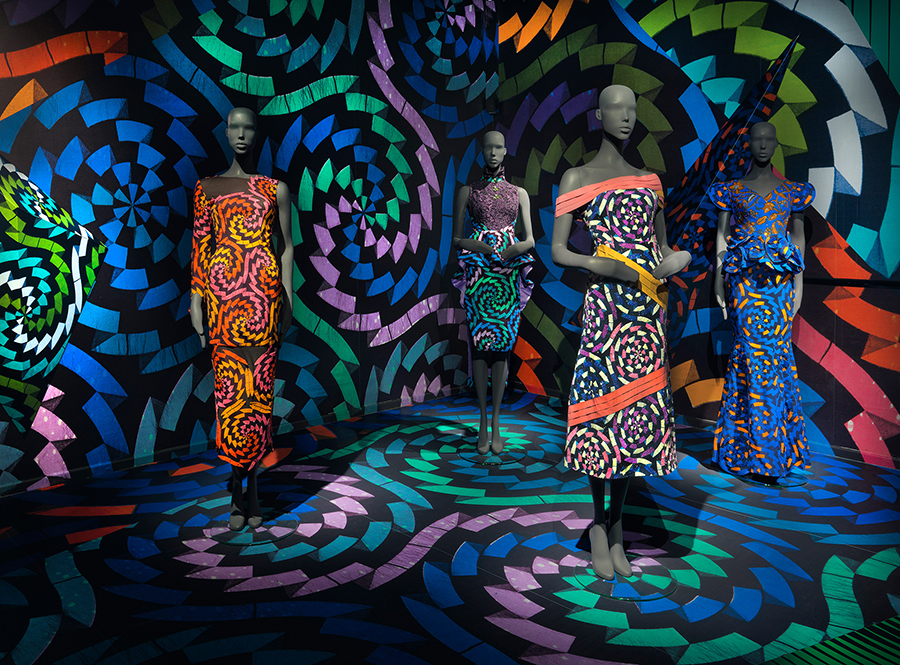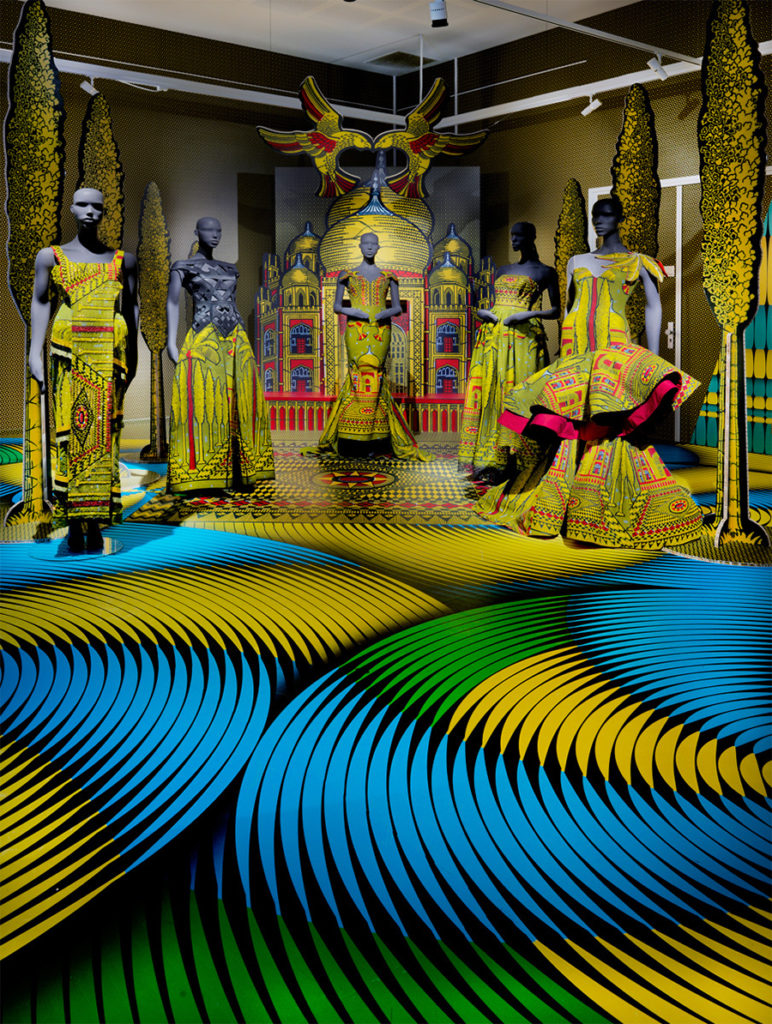Vlisco is celebrating 170 years of textile printing history with a special exhibition called “Vlisco 1:1 Un à Un” at the Helmond Museum, its birthplace, with celebrations to honor the African women who have contributed to its long success.
Founded in Helmond in 1846 by Pieter Fentener van Vlissingen, Vlisco merges Dutch and African art and design. Surprisingly, the first bright, graphic patterns of roller-printed wax fabrics that are so popular in West and Central African culture have their origins in the Netherlands and Indonesia.
Vlisco utilizes a specific wax printing process where the irregular removal of the wax results in every yard of printed cloth being slightly different from the next. The differences are subtle, but visible to a true connoisseur.
The original African traders of Vlisco prints were the dynamic women called ‘Nana Benz’. These women started from nothing to rise to be among the country’s richest by importing Vlisco fabric from Dutch companies based in Indonesia. They became known as Nana Benz because in the mid-50’s through 80’s they had made so much money that they were the only people in West and Central Africa who could afford Mercedes Benz cars. The women came to symbolize freedom, ingenuity, creativity, pride, achievement, success, and courage. A woman did not become a Nana Benz through inheritance, or society’s choice, but through ingenuity, and struggle.
